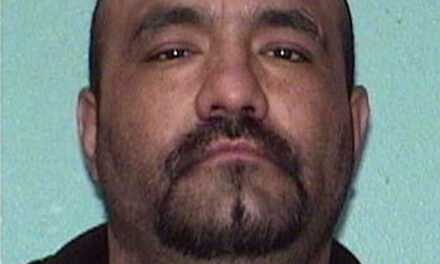(La Historia del Rio Abajo is a monthly column about Valencia County history written by members of the Valencia County Historical Society. Readers are encouraged to share memories about the subjects of current columns by calling Richard Melzer, La Historia’s editor, at 925-8620.)
Last month’s edition of La Historia del Rio Abajo described the flight of a single-engine Piper Cherokee (N5752W) on Oct. 23, 1969. The plane, piloted by Stacy Torres, took off from Mid-Valley Airport at 6:55 a.m. Its destination was Denver, Colo.
Three passengers accompanied Stacy on that fateful morning. Stacy’s dad, Al Torres, was on board to assist his 18-year-old son. A successful small-business owner, Al was highly respected in the Belen community.
Like so many of those who knew him, Joe Leo Romero remembers Al as a “straight shooter” of whom “nothing but good words can be said.”
In fact, Joe Leo was scheduled to accompany Al on the flight to Denver. But, not trusting small airplanes, he finally changed his mind about going.
Lindy Garcia had no such misgivings when he joined Stacy and Al on their trip north.
A bookkeeper in Belen, Lindy was also well liked and respected by all who knew him. Ramona Valdez-Otero recalls visiting Lindy with her family and deeply admiring him for his integrity, ingenuity and creativity.
Ramona remembers how excited Lindy was about his upcoming plane trip to Colorado in 1969.
Stacy’s third passenger, and the one who probably took Joe Leo Romero’s seat, was Tom Mayhew.
A classmate of Stacy’s at the University of New Mexico, Tom was eager to go to Denver to see his girlfriend.
Stacy landed in Albuquerque to pick Tom up before continuing north in his rented Piper Cherokee.
But Stacy and his passengers encountered inclement weather that October morning.
By mid-day, loved ones began to worry when the plane did not arrive in Denver on schedule. Some feared that the foursome may have become lost in the storm or, worse yet, may have crashed.
Friends and relatives from Valencia County began to search throughout northern New Mexico. Al’s brothers-in-law, including Preme Ulibarri, were especially active and helpful. Veteran pilots such as John Love searched, using their private planes.
Last month’s article attempted to list many of the men and women who assisted in one way or another, but it would be impossible to name them all.
The search parties pursued many leads in the following weeks and months, but they were unable to locate the plane and its passengers. Winter snow soon blanketed the northern terrain, making traveling and searching increasingly difficult.
Fast-forward to May of 1970, the following year. Al Torres’ brother-in-law, Abelicio Ulibarri, has decided to take time from work to search for the missing plane on his own.
After studying maps, Abelicio drives his truck to an area just north of the New Mexico-Colorado border to survey several sites. The last place he visits is the Bear Lake Campground in the South Cuchara Mountain Range of the San Isabel National Forest.
As soon as he arrives at the campground, Abelicio experiences a powerful sense that this is the place that he and so many others have been looking for.
Looking up to La Veta Pass, he feels sure that the pass is where the downed Cherokee Piper and its passengers will be found.
But Abelicio does not attempt to climb to the pass that day because the trail is still snow-packed and treacherous.
He marks the location on his map and vows to return later that spring, when more snow has melted.
Excited about his search, Abelicio returns to Belen to visit his sister, Charlotte, Al’s wife. Abelicio takes Charlotte aside and tells her of his travels and of his conviction that he knows exactly where Al, Stacy, Lindy and Tom can be found.
Abelicio tells Charlotte of his plans to climb La Veta Pass as soon as conditions allow.
But Abelicio Ulibarri never has a chance to return to La Veta Pass and climb the mountain to confirm his strong belief. Tragically, Abelicio dies of a sudden heart attack on May 16, 1970.
Unknown to the Torres and Ulibarri families, total strangers are destined to do what Abelicio had been so determined to achieve.
Four young men from Garden City, Kansas, have decided to hike in the San Isabel National Forest in late May.
Two, Craig Letourneau and Tim Larson, are schoolmates about to enter high school later that year. Tim’s older brother, Greg, and his friend, Ron Rupp, are already out of high school.
At least one of them is familiar with this hiking area and, with school just out, the older boys have agreed to take Craig and Tim along on a three- to four-day outing.
The day is Friday, May 29. The boys have planned to hike to the top of a 12,000-foot high mountain, a climb of some three to four hours. Tim and his brother argue as to which route is best to take.
Finally, Greg gives in to Tim’s preference. As Craig later recalls, it was as though something drew the boys in that particular direction that morning.
The four young hikers follow a stream for quite a distance until it disappears into the mountain. Then they hike on snow that is still frozen but relatively easy to walk on. The younger boys tolerate the thin mountain air better and are soon far ahead of Greg and Ron.
Craig is in the lead as he and Tim approach the top of the mountain. Suddenly Craig sees a downed Piper Cherokee near the edge of a ridge.
Assuming it’s an old crash scene, he calls to Tim and the two friends approach the site for a closer look.
On closer inspection, Craig and Tim realize that they are the first to discover a relatively recent crash site. Three bodies are found outside the plane. A fourth, the pilot’s, is found inside.
The fuselage is in remarkably good condition. Most of the damage is to the front end, as if it had been in a head-on collision. The plane’s tail had suffered hardly any damage. The aircraft’s large-letter identification number is clearly visible: N5752W.
Once the older boys arrived, the four hikers gathered items that might help identify the crash victims and their aircraft. They take the plane’s logbook, two maps, a camera and a checkbook belonging to Tom Mayhew.
Noting the plane’s identification number, the teenagers hurry down the mountain to share their news with authorities as quickly as possible.
Craig, Tim, Greg and Ron report their startling discovery to Forest Ranger Ralph Hickey at nearby La Veta, Colo. The ranger recalls that he had reported hearing a plane in trouble the previous fall.
But his information was dismissed because no one thought that the lost Piper Cherokee had traveled this far north.
News of the discovery of the Piper Cherokee, its pilot and its passengers spreads quickly.
Officials at the bank in Belen, which had offered the cash reward, are alerted within hours. Marion Hourly at the bank calls Charlotte Torres.
The Torres family is preparing to attend a May procession in honor of the Virgin Mary when the phone rings with the long-awaited news. The family’s prayers have been answered. At least they now know their loved ones’ fates. The Garcia and Mayhew families are notified as well.
Robert Torres, his uncles, Richard and Serafico and Arsine Badland leave immediately for the crash site in southern Colorado. Driving through the night, they arrive early the next morning.
While his companions rest, Arsine forges ahead. Finding the crash site, Arsine returns to escort Norbert, Richard and Serafico up the mountain to the very place where Abelico Ulibarri had planned to search.
Soon, a helicopter attempts to reach the crash site, but is unable to land on the rough ground.
Hours later, a 20-man team of expert mountain climbers is sent in. They are able to transport the bodies of Stacy, Al, Lindy and Tom down from the mountain without mishap.
The bodies of Stacy, Al and Lindy are returned to Belen. On June 2, a funeral service for all three men is held at Our Lady of Belen Catholic Church, where so many fervent prayers for their return had been offered.
So many friends and relatives attend the funeral service that cars are parked down Church Street all the way east to South Main. The three local crash victims are buried at the Catholic cemetery.
Tom Mayhew is buried in Farmington, his hometown.
Learning of the reward money from the forest ranger they had spoken to in Colorado, Craig Letourneau and his friends claimed their reward of $1,100.
Craig recalls that he spent his share on a down payment for his car, a Plymouth Duster. He doesn’t recall how the other boys spent their share of the reward.
Fast-forward two years to 1972. Al Torres’ niece, Lorraine, her husband, Gilbert Garica, and Ralph Castillo, Lindy’s nephew, make a pilgrimage to the crash site high in the Colorado mountains.
Gilbert has constructed a wrought-iron memorial cross with a small plaque bearing the names of Stacy, Al, Lindy and Tom.
The visitors erect their descanso in a pile of rocks mixed with small pieces of the wreckage. It is a fitting monument to the four talented, respected men from New Mexico. The monument was still standing when Craig Letourneau revisited the site some 20 years later.
So what had happened on the morning of Oct. 23, 1969?
Although those events will forever remain a mystery, it is apparent that Stacy and his passengers flew into the first heavy snowstorm of the 1969 winter season.
Stacy was probably flying at a high enough altitude, but visibility no doubt became marginal at best.
Suddenly seeing a ridge as they attempted to clear a 12,000-foot high mountain, Stacy was probably unable to make the Piper Cherokee gain altitude fast enough to avoid colliding with the rugged terrain.
The plane crashed. Al, Lindy and Tom were apparently thrown from the plane on impact. Stacy remained pinned in the pilot’s seat.
The travelers had done the best they could under horrible circumstances. But no amount of flying skills, survival methods, or emergency supplies could help them in such terrible flying conditions.
Family and friends still miss Stacy, Al, Lindy and Tom. Their deaths were tragic because they were all so young and had so much more to live for and contribute to their communities.
But if there is a lasting lesson to be learned from this tragedy, it is the lesson learned by Charlotte Torres and her family in the weeks and months following Al’s and Stacy’s crash.
Charlotte says she was overwhelmed by the outpouring of love and support that so many offered to her family in their time of need. Charlotte’s daughter, Therese, later wrote, “as ironic as it may seem, our hope in finding my father and brother alive never came true, but we did gain a hope for the future through the caring of our community.”
The people of Valencia County are like that. It is a wonderful truism for all to remember when we think of those long-ago events when four good men were finally found and brought home to rest at last.
The Valencia County News-Bulletin is a locally owned and operated community newspaper, dedicated to serving Valencia County since 1910 through the highest journalistic and professional business standards. The VCNB is published weekly on Thursdays, including holidays both in print and online.
















